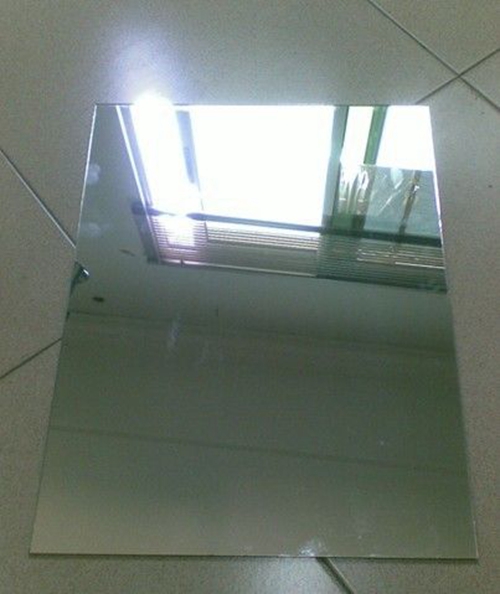Stainless steel has been widely used due to its high corrosion resistance and decorative properties, especially in medical appliances, food industry appliances, tableware, kitchen utensils, etc. Stainless steel appliances should be corrosion-resistant, bright and clean, and the surface of the appliance should not be attached with substances that are toxic to the human body. Therefore, the requirement for the surface treatment of such appliances is to completely remove the harmful substances on the surface.
The materials required for stainless steel polishing generally include: "polishing wax, hemp wheel, nylon wheel, cloth wheel, wind wheel, wire cloth wheel" and so on.

Application range
Stainless steel has been widely used due to its high corrosion resistance and decorative properties, especially in medical appliances, food industry appliances, tableware, kitchen utensils, etc. Stainless steel appliances should be corrosion-resistant, bright and clean, and the surface of the appliance should not be attached with substances that are toxic to the human body. Therefore, the requirement for the surface treatment of such appliances is to completely remove the harmful substances on the surface.
Oxidation cause
After hot working, machining or standing for a certain period of time, stainless steel will form a black or gray scale on the surface. Its main components are Cr2O3, NiO and very insoluble FeO and Cr2O3. Their existence affects the appearance quality on the one hand. On the one hand, it also affects the performance of the product, so take appropriate measures to remove it. There have been many reports on surface treatments such as scale removal and finishing of stainless steel. As a mature surface treatment method, stainless steel polishing has been widely used, and polishing can further improve the corrosion resistance and brightening effect of stainless steel.
Chemical polishing
Chemical polishing is a commonly used surface treatment process for stainless steel. Compared with the electrochemical polishing process, the biggest advantage is that it does not require a DC power supply and special fixtures, and can polish complex shapes and has high productivity. In terms of functionality, in addition to the physical and chemical cleanliness of the surface, chemical polishing removes the mechanical damage layer and stress layer on the stainless steel surface to obtain a mechanically clean surface, which helps prevent local corrosion of the part and improves Mechanical strength and extended part life. Since the patent on stainless steel chemical polishing in the early 1940s, many formulations have been made public so far, but people still find it difficult to use in practical applications. Because of the wide variety of stainless steels, different grades of stainless steel have different corrosion laws, it is impossible to use the same solution, so there are many types of stainless steel chemical polishing solutions.
The basic composition of the chemical polishing solution includes an etchant, an oxidant, and water. The etchant is the main component, and if the stainless steel is dissolved in the solution, polishing cannot be performed. Oxidants and additives inhibit the process, allowing the reaction to proceed in a direction that favors polishing. Water regulates the concentration of the solution to facilitate the diffusion of the reaction product. Whether stainless steel chemical polishing can proceed smoothly depends on the reasonable combination of the above ingredients.

Electrolytic polishing
Stainless steel electropolishing is to hang the stainless steel product on the anode and perform anodic electrolysis processing in the electrolytic polishing liquid. Electropolishing is a special anode process. During the entire anodic electropolishing process, two contradictory processes are simultaneously carried out on the surface of the stainless steel product, namely the continuous formation and dissolution of the oxide film on the metal surface. However, the conditions for the chemical film formation of the convex portion and the concave portion of the stainless steel product to enter the passive state are different, and due to the dissolution of the anode, the concentration of the metal salt in the anode region is continuously increased, forming a high resistivity consistency on the surface of the stainless steel product. Mucosal layer. The thickness of the thick mucosa on the surface of the product is not the same, and the microscopic surface current of the anode is unevenly distributed. The micro-bump has a large current density and dissolves quickly, so that the surface burr or micro-protrusion of the product is preferentially dissolved to achieve leveling; the current density at the concavity is small, and the dissolution is slow. Due to the different current density distribution, the surface of the product is continuously filmed and dissolved at different rates. The anode surface is simultaneously subjected to two opposite processes, film formation and dissolution, and the passivation film is continuously formed and dissolved, so that the surface of the stainless steel product is leveled to achieve a highly smooth and glossy appearance, which satisfies the purpose of polishing the surface of the stainless steel product. .
Brightness level
Visual inspection, the brightness of the polished surface is divided into 5 levels:
Level 1: The surface has a white oxide film with no brightness;
Level 2: slightly bright, can't see the outline;
Level 3: good brightness, can see the outline;
Level 4: The surface is bright and the outline is clearly visible (corresponding to the surface quality of electrochemical polishing).
Precautions
Grinding with sandpaper or abrasive tape in the grinding operation is basically a buffing operation, leaving a very fine grain on the surface of the steel sheet.
There have been problems with using alumina as an abrasive, in part because of pressure problems.
Any abrasive parts of the equipment, such as abrasive belts and grinding wheels, must not be used for other non-stainless steel materials before use. Because it will contaminate the stainless steel surface.
In order to ensure the consistency of the surface processing, the new grinding wheel or belt should be tested on the same waste to compare with the sample.

